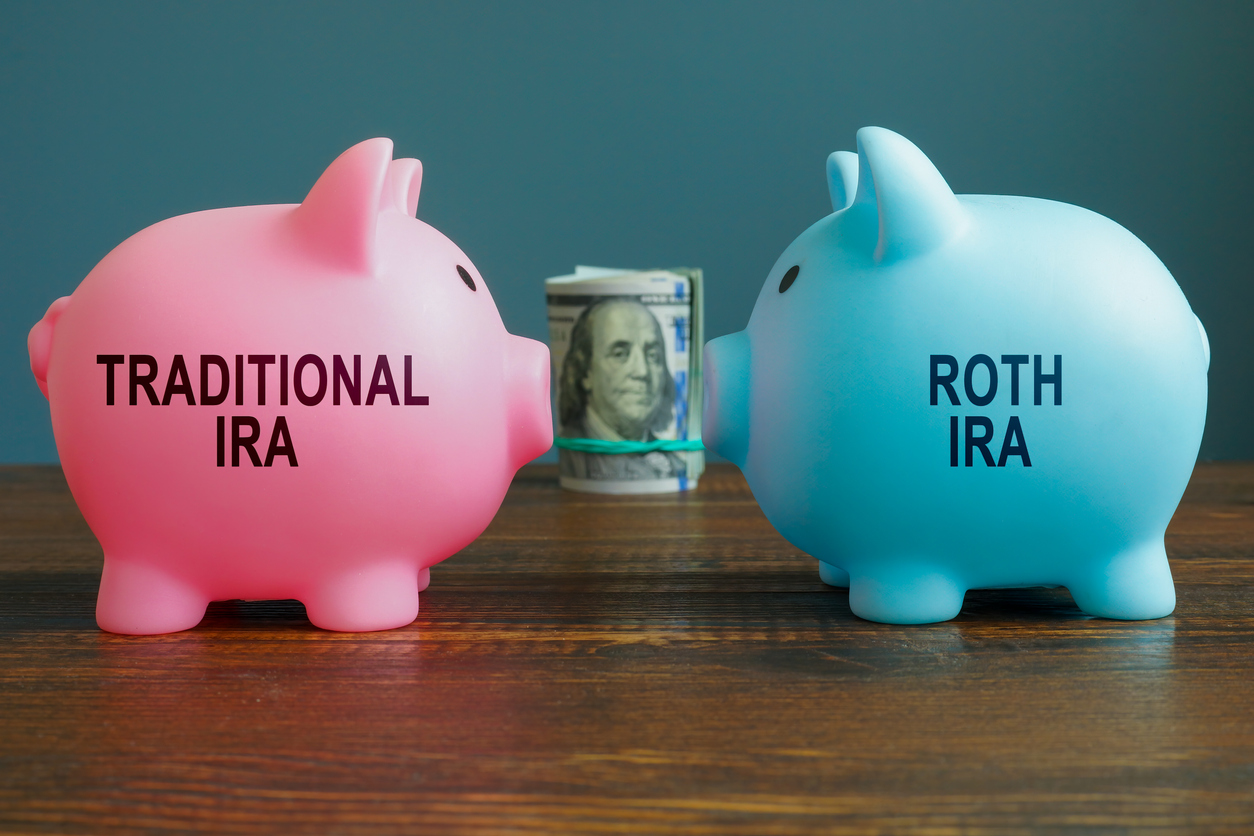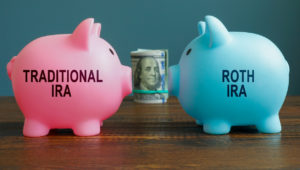To Roth or Not


A Roth conversion is a taxable transfer of assets from your traditional, SEP, or SIMPLE IRA to a Roth IRA in an effort to take advantage of the tax and withdrawal benefits of a Roth IRA. Not only do assets grow tax-deferred in a Roth IRA, but distributions are 100% tax-free to the account holder (as long as the account holder is over age 59½ or the converted assets have been in the Roth IRA for more than five years, whichever is sooner) and 100% tax-free to his or her heirs for generations to come.
Another advantage to Roth conversions is the reduction in future Required Minimum Distributions (RMDs). Because RMDs only apply to assets in a Traditional, SEP, or SIMPLE IRAs, once the assets are converted to the Roth IRA, your pre-tax account balances are reduced, which thereby reduces the RMD amount. Further, this reduces taxable income in future years, as RMDs are considered IRA distributions and, thus, included in the calculation for taxable income.
When does it make sense to consider a Roth conversion?
Roth conversions make sense for Clients with certain income, tax bracket, and portfolio composition circumstances. Below are a few examples:
- First, a Roth conversion can be very advantageous in years when Clients find themselves with very low, or lower-than-usual taxable income and, thus, in a lower marginal tax bracket. Think early retirement years, prior to receiving Social Security benefits and beginning Required Minimum Distributions. At this point, Clients’ earned income has dropped drastically, if not to zero, and other taxable income is very low (consisting maybe only of dividends, interest and capital gains). Because a Roth conversion triggers a tax liability (reported on the front of the Form 1040 as a taxable IRA distribution), a year with low expected taxes is likely the only time a Roth conversion makes sense.
- In this case, the Roth conversion is often used to ‘fill up’ the marginal tax bracket the Client is currently in. In other words, it is most advantageous to convert an amount that will use up the rest of the current marginal tax bracket the client is in without popping them over into the next marginal tax bracket.
- For example, 2025 10% marginal tax bracket for clients Married Filing Jointly ranges between $0 and $23,850 in taxable income. If a client expected to only have $10,000 in taxable income, it might make sense to do a Roth conversion, but only convert an amount up to the top of the 10% bracket, or about $13,800.
- Next, it only makes sense to perform a Roth conversion if the Client has non-IRA/after-tax assets to pay the tax liability.
- The tax liability should not be paid from IRA assets because doing so would require the Client to make an additional withdrawal from the IRA to pay the tax liability, triggering an additional tax liability (and possibly a penalty if the Client is under age 59 ½).
- Paying taxes out of non-IRA assets is also advantageous because it permanently removes the IRA’s embedded income tax liability from your estate. That embedded tax liability is part of the estate tax calculation, even though it will still be paid to the IRS when beneficiaries take distributions. In other words, if your estate is large enough, estate taxes might be paid on a portion of the IRA that your heirs will never see because it will be siphoned away as income taxes.
How will I know if a Roth conversion might be appropriate for me?
At Yeske Buie, we complete a full review of Client situations and Client accounts for Roth conversion possibilities each year and, once determined which Clients may have compelling reasons to consider a Roth conversion, complete an in-depth analysis for each including the following:
- Does the Client have non-IRA/after-tax assets sufficient to pay the tax liability that would be triggered?
- If there are no/insufficient after-tax assets available, a Roth conversion does not make sense.
- Is the Client spending from the portfolio?
- This factoid can be helpful in determining if the Client has availability to pay the tax liability from his/her Safe-Spending target, or if the tax liability would greatly overspend the annual Safe-Spending target.
- Does the Client’s situation present a compelling opportunity to use up taxable income ‘space’ in a low tax bracket?
- Is the Client subject to Required Minimum Distributions or receiving Social Security and/or Medicare benefits?
- These affect taxable income and must be included in the analysis.
Here’s a playful illustration depicting to our Roth conversion analysis.
Once the analysis is complete and has been reviewed by the Client’s planning team a recommendation is noted – yes, Roth conversion is recommended or, no, a Roth conversion is not recommended.
If a Roth conversion is recommended for that year:
- The Client’s planning team will finalize the recommended conversion amount (taking into account all pieces listed above, specifically the amount of conversion that would keep the client in the low tax bracket without bumping into the next, higher marginal tax bracket);
- Next, the team will reach out to the client to share the recommendation and plan for next steps, including working with the Client’s tax expert for their final recommendation and completing the conversion from IRA to Roth IRA.
To summarize:
Yeske Buie will complete an in-depth Roth Conversion Analysis if a review of your specific situation prompts us to do so and will consider all pros and cons when doing so, including:
Pros:
- Roth IRAs have beneficial tax treatment and fewer regulations/penalties on withdrawals.
- Reducing the assets in your traditional, SEP, and SIMPLE IRA accounts reduces your future RMDs and thus, future taxable income.
- In a Roth IRA, assets grow tax-deferred, and distributions are 100% tax-free (subject to the specifications below) and assumed to be withdrawn in the following order (which greatly benefits the account holder) :
- Contributions are considered to be withdrawn first and are always 100% tax-free and penalty-free.
- Converted amounts are considered to be withdrawn after all contributed amounts have been withdrawn. As long as the account holder is age 59½ or older, or the converted assets have been in the Roth IRA for five years, these withdrawals are 100% tax-free and penalty-free.
- Earnings are considered to be withdrawn last, only after contributions and converted amounts have been exhausted, and are 100% tax-free and penalty-free as long as the account holder is over age 59½ or the Roth IRA has been open for five years.
- Roth IRAs inherited by heirs are received tax-free and distributions are always 100% tax-free and penalty-free.
- Non-IRA/after-tax assets used to pay tax liabilities are permanently removed from the client’s gross estate.
Cons:
- A Roth conversion creates additional taxable income that could bump the Client into a higher marginal tax bracket.
- When Yeske Buie completes the analysis, we review a tax projection and err on the side of caution in an effort to keep you within the same marginal tax bracket.
- This big jump in income could cause the Client to be subject to the 3.8% surtax (assessed on the smaller of Net Investment Income or Modified Adjusted Gross Income).
- Considered in Yeske Buie’s Roth Conversion Analysis.
- The taxable income generated by a Roth conversion could cause Medicare beneficiaries to be subject to premium surcharges for Medicare Parts B and D.
- Considered in Yeske Buie’s Roth Conversion Analysis.
- Once a conversion is made, you must wait five years or until age 59.5 (whichever happens first) before you can withdraw converted assets.
- Roth conversions must be done prior to December 31 in the year you wish to convert, so you can’t wait to see actual taxable income figures prior to determining the amount to convert.
Year-End Tax Planning is around the corner. Stay tuned!

